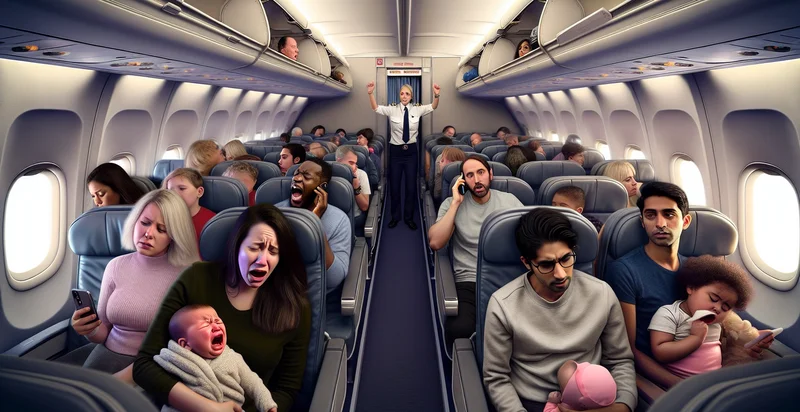Identify in-flight distraction factors
using AI
Below is a free classifier to identify in-flight distraction factors. Just input your text, and our AI will predict in-flight distraction factors that may affect passenger comfort. - in just seconds.

Contact us for API access
Or, use Nyckel to build highly-accurate custom classifiers in just minutes. No PhD required.
Get started
import nyckel
credentials = nyckel.Credentials("YOUR_CLIENT_ID", "YOUR_CLIENT_SECRET")
nyckel.invoke("in-flight-distraction-factors", "your_text_here", credentials)
fetch('https://www.nyckel.com/v1/functions/in-flight-distraction-factors/invoke', {
method: 'POST',
headers: {
'Authorization': 'Bearer ' + 'YOUR_BEARER_TOKEN',
'Content-Type': 'application/json',
},
body: JSON.stringify(
{"data": "your_text_here"}
)
})
.then(response => response.json())
.then(data => console.log(data));
curl -X POST \
-H "Content-Type: application/json" \
-H "Authorization: Bearer YOUR_BEARER_TOKEN" \
-d '{"data": "your_text_here"}' \
https://www.nyckel.com/v1/functions/in-flight-distraction-factors/invoke
How this classifier works
To start, input the text that you'd like analyzed. Our AI tool will then predict in-flight distraction factors that may affect passenger comfort..
This pretrained text model uses a Nyckel-created dataset and has 20 labels, including Ambient Chatter, Chatty Neighbors, Children Playing, Crying Baby, Flashing Cabin Lights, Foot Traffic In The Aisle, In-Flight Announcements, In-Flight Service Interruptions, Loud Noise and Mechanical Sounds.
We'll also show a confidence score (the higher the number, the more confident the AI model is around in-flight distraction factors that may affect passenger comfort.).
Whether you're just curious or building in-flight distraction factors detection into your application, we hope our classifier proves helpful.
Related Classifiers
Need to identify in-flight distraction factors at scale?
Get API or Zapier access to this classifier for free. It's perfect for:
- Passenger Experience Optimization: Airlines can use the in-flight distraction factors identifier to analyze passenger feedback and behavior during flights. By identifying common distractions, airlines can implement strategies to enhance the overall travel experience and improve customer satisfaction.
- Cabin Crew Training: The identifier can highlight specific distraction factors that affect passenger comfort, helping airlines develop targeted training programs for cabin crew. By understanding these factors, crew members can be better equipped to address passenger concerns and improve service quality.
- Entertainment Content Curation: Airlines can utilize the distraction identifier to curate in-flight entertainment options that resonate better with different passenger demographics. By analyzing which distractions detract from the enjoyment of existing content, airlines can enhance their offerings to keep passengers engaged.
- Flight Scheduling Optimization: By identifying distraction factors related to different flight times and durations, airlines can optimize their scheduling. For instance, flights that typically see higher distraction rates could be adjusted with more robust support services or enhanced entertainment options.
- In-Flight Advertising Effectiveness: Airlines can assess the impact of various distraction factors on the effectiveness of in-flight advertisements. Understanding when and why passengers may be distracted allows for better-targeted ad placements and more engaging promotional strategies.
- Safety Protocol Improvement: The identifier can help airlines pinpoint distractions that may hinder the effectiveness of safety briefings or emergency procedures. By addressing these distraction factors, airlines can enhance passenger awareness and adherence to safety protocols.
- Data-Driven Customer Insights for Marketing: By analyzing distraction factors, airlines can gain deeper insights into customer preferences and behaviors during flights. This information can be leveraged for more effective marketing strategies, tailored services, and personalized passenger interactions, ultimately driving loyalty and revenue.


